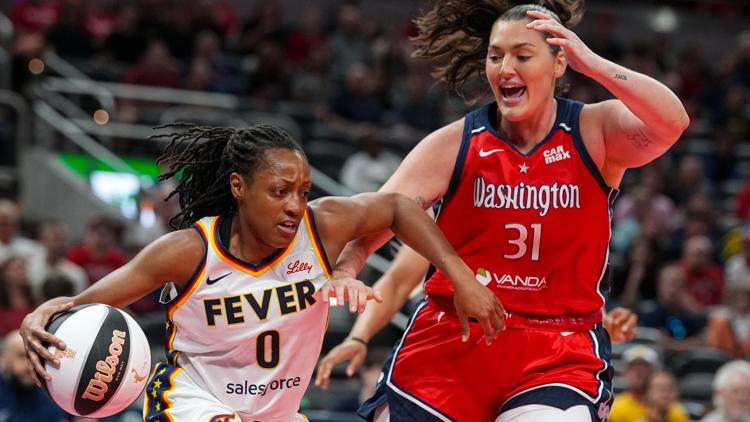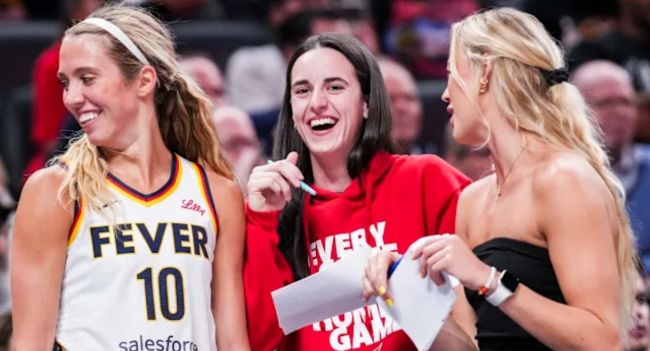On paper, the Indiana Fever should be celebrating. They just marched into Seattle, a notoriously difficult place to play, and defeated the Storm to secure their fifth consecutive victory. This isn’t just another win; it’s a statement. The streak marks the franchise’s best run in over ten years and has them knocking on the door of second place in the WNBA standings. For a team that many oddsmakers had written off, this run is a powerful testament to their growth, resilience, and newfound cohesion. Players and coaches speak of trust, of “stacking the days,” and of the mental fortitude that allows them to withstand opponent runs that would have buried them earlier in the season.
But beneath the surface of this triumphant narrative, a storm of a different kind is brewing, and it’s raging across social media. While the team celebrates a hard-fought win, fans are fixated on a baffling and frustrating dynamic that unfolded on the court. The game has become a flashpoint for a debate centered on two players whose performances were polar opposites: Kelsey Mitchell and Sophie Cunningham. The controversy has become so loud that it threatens to overshadow the team’s incredible success, raising uncomfortable questions about on-court chemistry and coaching strategy.

The crux of the issue lies in the game’s box score and the viral observations that spread like wildfire online during the game. Kelsey Mitchell, a veteran leader and established scorer for the Fever, had what can only be described as a nightmare shooting night. She was ice-cold from the field, finishing the game 3-for-16 and, most glaringly, 0-for-8 from three-point range. Despite her struggles, Mitchell remained on the court for a staggering 29 minutes. Fans watched in disbelief as possession after possession ended with another errant shot from Mitchell, some of which were ill-advised attempts early in the shot clock while the Fever were trying to protect a fragile lead in the fourth quarter.
The frustration from fans was palpable. Many argued that in a professional setting, no player, regardless of their status, should be allowed to shoot their team out of a game. The decision by Head Coach Stephanie White to stick with Mitchell became a major point of contention, with many claiming that had the Fever lost, the responsibility would have fallen squarely on the failure to make a substitution. It was a gamble that ultimately paid off with a win, but it left a sour taste in the mouths of many who felt the team was succeeding in spite of, not because of, this key rotation decision.

The frustration with Mitchell’s performance was magnified exponentially by the simultaneous breakout game of her teammate, Sophie Cunningham. While Mitchell couldn’t buy a basket, Cunningham was on fire. She was the team’s offensive sparkplug, hitting an incredible 4 of her 5 attempts from beyond the arc. In a game where the rest of the team combined to shoot a dismal 0-for-17 from three-point territory, Cunningham was the lone beacon of long-range efficiency. She was, by all accounts, the “hot hand.”
This is where the story takes a sharp turn into controversy. According to a widely circulated social media post from a fan tracking the game’s flow, a bizarre pattern emerged after the middle of the third quarter: the ball stopped finding its way to Sophie Cunningham. Despite being the most effective offensive player on the floor, she was seemingly “frozen out” of the offense. The team continued to run plays that resulted in contested shots from struggling players, while their most reliable shooter was relegated to a spectator.
This apparent freeze-out ignited a firestorm online. How could a team, in a tight road game, consciously or unconsciously ignore the one player who couldn’t miss? The incident flew directly in the face of the team’s public narrative of growing trust and playing for each other. It created a jarring disconnect for viewers: on one hand, post-game interviews highlighted team unity; on the other, the on-court evidence suggested a breakdown in offensive priority and awareness.
The situation forces a difficult analysis. Was this an intentional slight, a sign of deeper chemistry issues where certain players are prioritized regardless of performance? Or was it an unfortunate, unintentional byproduct of a chaotic game, a simple failure to execute the most fundamental rule of basketball: feed the hot hand?
Whatever the reason, the optics are damaging. For a team that is constantly under the national microscope, every action is scrutinized. The decision to leave Mitchell in while Cunningham was sidelined offensively has provided fuel for critics and has left even the most ardent supporters scratching their heads. It raises valid questions about accountability and the coaching staff’s ability to adapt in real-time.
In the end, the Indiana Fever left Seattle with the win, and in sports, that is often the only thing that matters. They showed grit, kept their composure, and found a way to win a game they were expected to lose. It was another step forward in a season that has been defined by remarkable progress. However, the victory came with a significant caveat. It exposed a potential vulnerability not in their skill, but in their on-court decision-making. The debate over Mitchell’s minutes and Cunningham’s disappearing act is now a part of their story, a reminder that even in victory, there are always underlying complexities to navigate. As the Fever continue their push toward the top of the standings, they will be watched not just for their wins and losses, but for how they answer the tough questions this game has raised.

